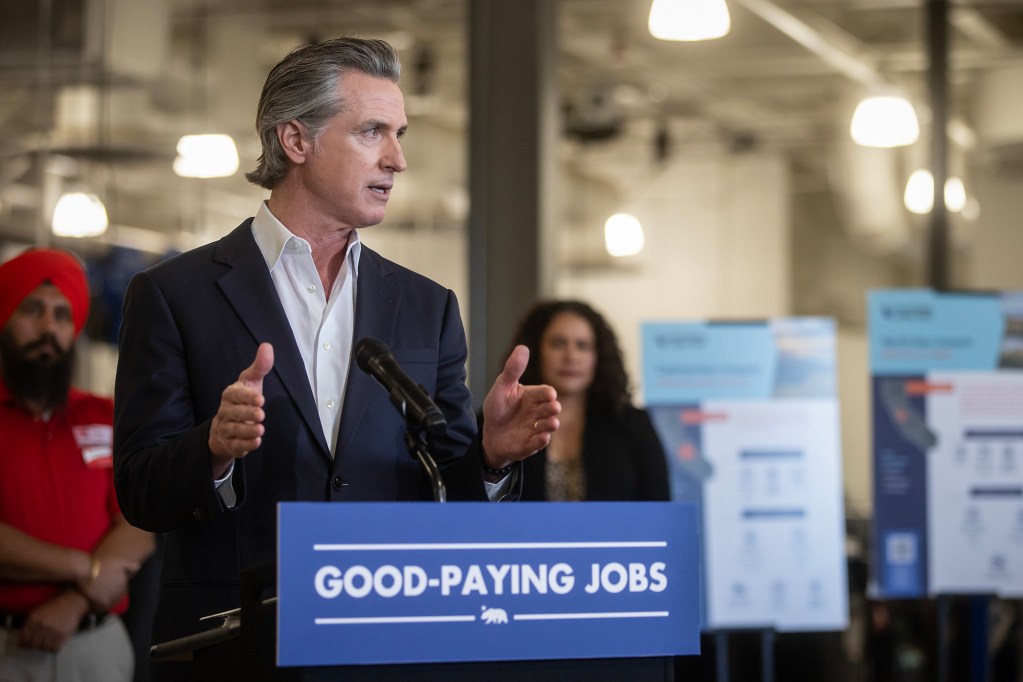
For a great many Americans, the November election results elicited an intense reaction. These responses, played out in real time on election newscasts and social media timelines, included everyday working people, media celebrities, television and movie stars, and even past and present politicians, including our own Gov. Gavin Newsom, who very quickly announced his plans to “Trump-proof” the state through all necessary legal and legislative means.
His plan would theoretically aim to shield California’s progressive policies from any federal manipulation by bolstering resources for the Attorney General’s office and other state agencies in preparation for long, drawn-out legal battles with the Trump administration. The problem is that this is an exclusively defensive approach to solving a grassroots problem that will outlast Trump’s second term.
A far better and proactive approach — and one that would significantly increase the benefit to all Californians over the long haul — is to improve the effectiveness of our state government.
The results of this year’s elections have spoken volumes about what we have become as a nation and what is most important to our citizens. Most Americans wake up before the sun rises every morning, toss back a cup of coffee and bust their tails for the next 45 years. They work tirelessly for their families, and they want to be treated fairly and objectively. They want to feel safe and accumulate a small measure of economic security for their children.
Basic governance creates the space for attaining those modest aspirations.
In 1969, Peter Drucker, the influential management consultant, author and educator, noted in the now-defunct Public Interest journal that the greatest factor in our “disenchantment” with government is that government has not performed.
His remedy holds just as true today. Improvement in government requires “…the clear definition of the results a policy is expected to produce, and the ruthless examination of results against these expectations. This, in turn, demands that we spell out in considerable detail what results are expected rather than content ourselves with promises and manifestos.”
Overcoming disenchantment requires achieving results.
California’s government is not achieving results, and our disenchantment manifested in the vote to overwhelmingly adopt Proposition 36, for example, which reclassifies some misdemeanor theft and drug crimes as felonies. Public safety is a basic government function that is foundational to a thriving state.
And there are other basics that need attention: Fostering a thriving economy calls for addressing systemic challenges with balanced policies. Attracting businesses and promoting economic growth through supportive measures — rather than imposing burdensome regulations and legal obstacles — can prevent the exodus of businesses, preserve access to critical goods and services, and sustain entry-level job opportunities.
This approach offers a far less antagonistic pathway to reduce unemployment and bring California in line with national economic benchmarks.
And nothing requires a more “ruthless examination of results” than our state’s approach to its homeless population. California must finally put someone in charge of homelessness response to bring alignment and focus on achieving results that get and keep people off the streets. Similarly, establishing systems to properly care for those with mental health and substance abuse issues, and creating programs to assimilate legal immigrants into our communities, would offer individuals a path towards a better life and provide a measure of hope for a brighter future.
These are building blocks that would help Californians trust that our political leaders have our best interests at heart. By recommitting to these governing basics, our state can set the stage to achieve much grander goals on clean air and climate. Each new measure builds a layer of protection against potential federal policy shifts and ensures that California’s underlying values and laws remain intact.
Government effectiveness means more than instituting barriers of prevention — it means setting clear goals and objectives that will achieve results for constituents and stamp our state as a model of proactive leadership for years to come.


